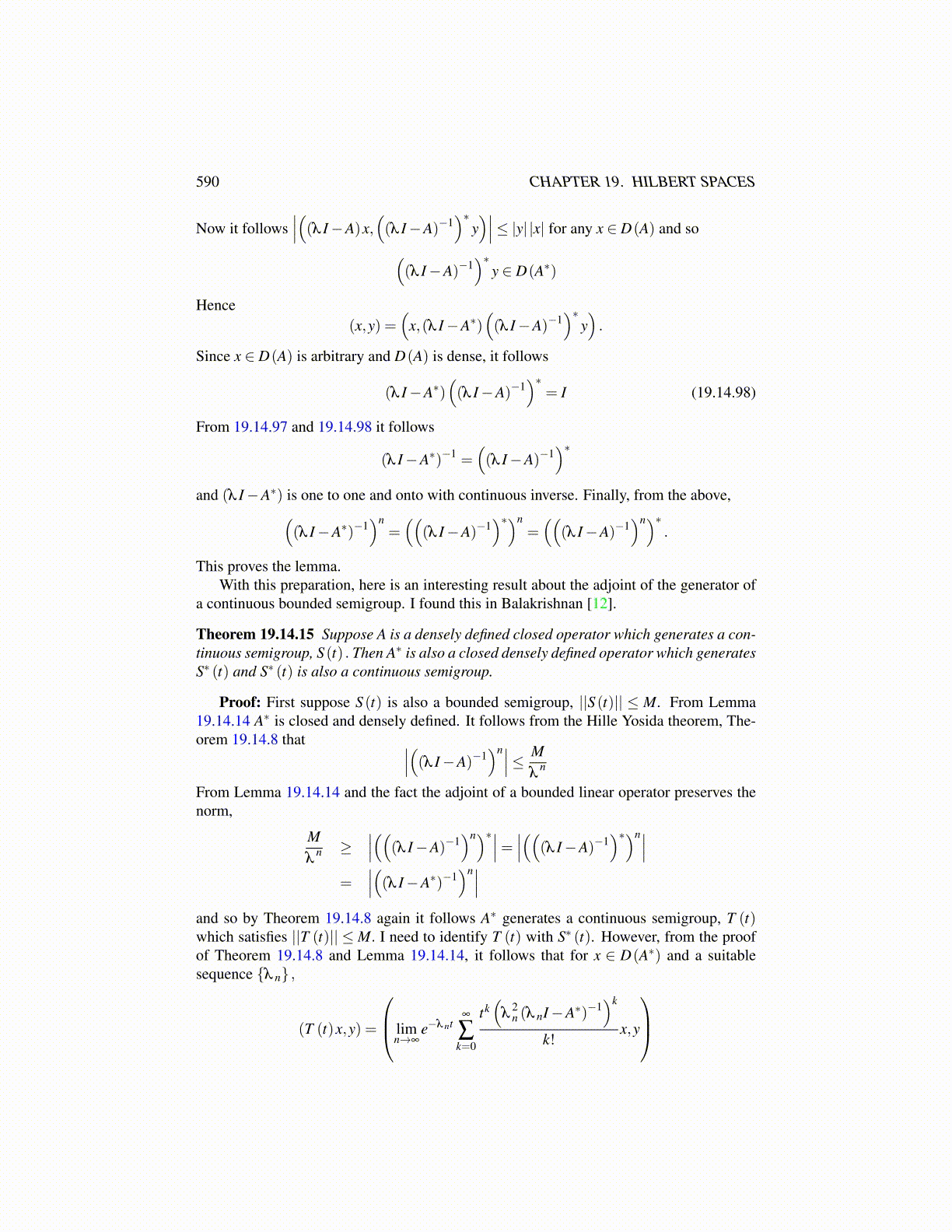
590 CHAPTER 19. HILBERT SPACES
Now it follows∣∣∣((λ I−A)x,
((λ I−A)−1
)∗y)∣∣∣≤ |y| |x| for any x ∈ D(A) and so(
(λ I−A)−1)∗
y ∈ D(A∗)
Hence(x,y) =
(x,(λ I−A∗)
((λ I−A)−1
)∗y).
Since x ∈ D(A) is arbitrary and D(A) is dense, it follows
(λ I−A∗)((λ I−A)−1
)∗= I (19.14.98)
From 19.14.97 and 19.14.98 it follows
(λ I−A∗)−1 =((λ I−A)−1
)∗and (λ I−A∗) is one to one and onto with continuous inverse. Finally, from the above,(
(λ I−A∗)−1)n
=((
(λ I−A)−1)∗)n
=((
(λ I−A)−1)n)∗
.
This proves the lemma.With this preparation, here is an interesting result about the adjoint of the generator of
a continuous bounded semigroup. I found this in Balakrishnan [12].
Theorem 19.14.15 Suppose A is a densely defined closed operator which generates a con-tinuous semigroup, S (t) . Then A∗ is also a closed densely defined operator which generatesS∗ (t) and S∗ (t) is also a continuous semigroup.
Proof: First suppose S (t) is also a bounded semigroup, ||S (t)|| ≤ M. From Lemma19.14.14 A∗ is closed and densely defined. It follows from the Hille Yosida theorem, The-orem 19.14.8 that ∣∣∣((λ I−A)−1
)n∣∣∣≤ Mλ
n
From Lemma 19.14.14 and the fact the adjoint of a bounded linear operator preserves thenorm,
Mλ
n ≥∣∣∣(((λ I−A)−1
)n)∗∣∣∣= ∣∣∣(((λ I−A)−1)∗)n∣∣∣
=∣∣∣((λ I−A∗)−1
)n∣∣∣and so by Theorem 19.14.8 again it follows A∗ generates a continuous semigroup, T (t)which satisfies ||T (t)|| ≤M. I need to identify T (t) with S∗ (t). However, from the proofof Theorem 19.14.8 and Lemma 19.14.14, it follows that for x ∈ D(A∗) and a suitablesequence {λ n} ,
(T (t)x,y) =
limn→∞
e−λ nt∞
∑k=0
tk(
λ2n (λ nI−A∗)−1
)k
k!x,y